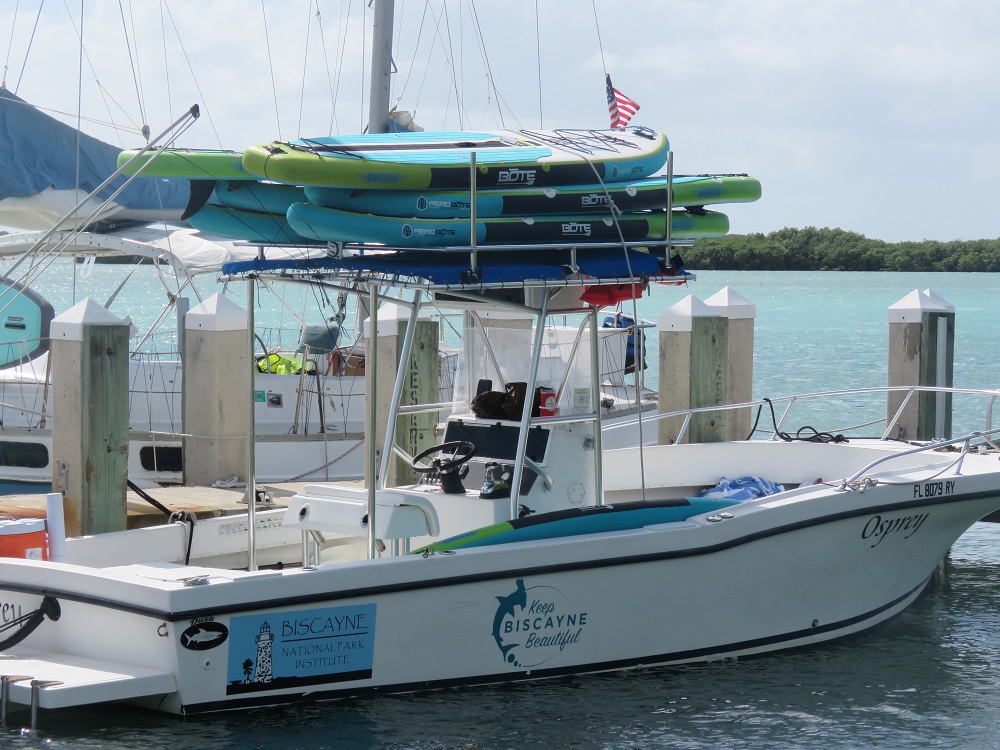
We were in Miami for a few days for a wedding in November and decided to complete our visit to Everglades National Park and Biscayne National Park. It was a quick trip but we managed to pack in pictures of Stiltsville (on the north end of Biscayne National Park), a semi-private boat tour with snorkeling and paddleboarding near Adams Key in Biscayne Bay, and then a 90 minute boat tour of the Everglades from Flamingo Marina.
A few years back on our way to Dry Tortugas National Park, we were able to complete the Shark Valley Tram Tour, the Anhinga Trail and Pa-Hay-Okee Lookout Tower. However, we ran out of time and were unable to stop at Biscayne or make it all of the way down to Flamingo Visitor Center. Two days after the wedding gave us the time that we needed to round out a few more things at the South Florida parks.
We had a few hours before the Saturday wedding and found our way (despite intermittent rain) to Bill Baggs Cape Florida State Park. Bill Baggs is at the south end of Key Biscayne in Miami Dade County. The park houses the Cape Florida Light lighthouse, which marks the deepest natural channel into Biscayne Bay. There has been a lighthouse on the site since 1825 and the present version dates back to 1878. We were not able to make one of the guided tours, but we were able to walk around and enter two of the buildings used by the lighthouse keepers.
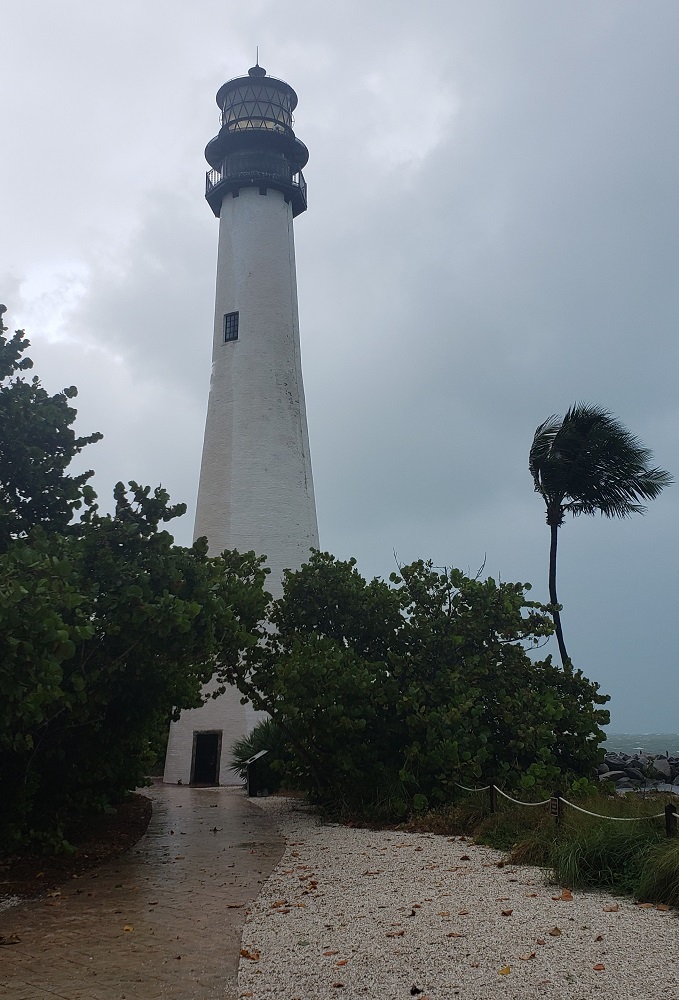
We also walked down the trail to the bay and were able to see Stiltsville. Stiltsville is a collection of wood stilt houses located in Biscayne Bay about one mile southeast of Cape Florida. The first were built in the 1930s and there were 27 in the community at their peak in 1960. The houses are abandoned and the area was deeded by the State of Florida to the federal government as part of Biscayne National Park in 1985. Seven buildings remain since Hurricane Andrew in 1992.
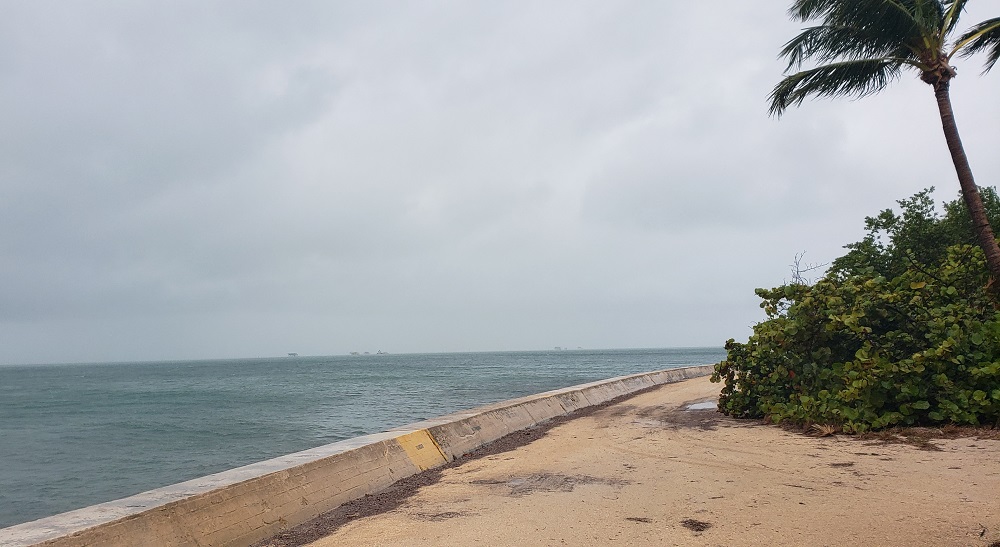
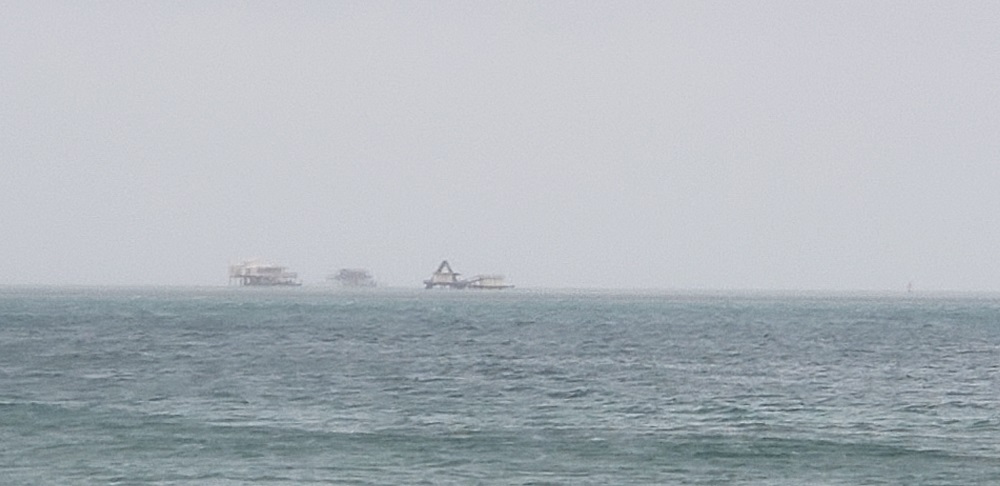
Bring binoculars or a powerful telephoto lens to have a better view of Stiltsville from shore. However, since they are located in the middle of the water over a mile away, it is tough to pickup much detail. We used my Samsung Galaxy Note 10 to capture a few pictures despite the rain and clouds.
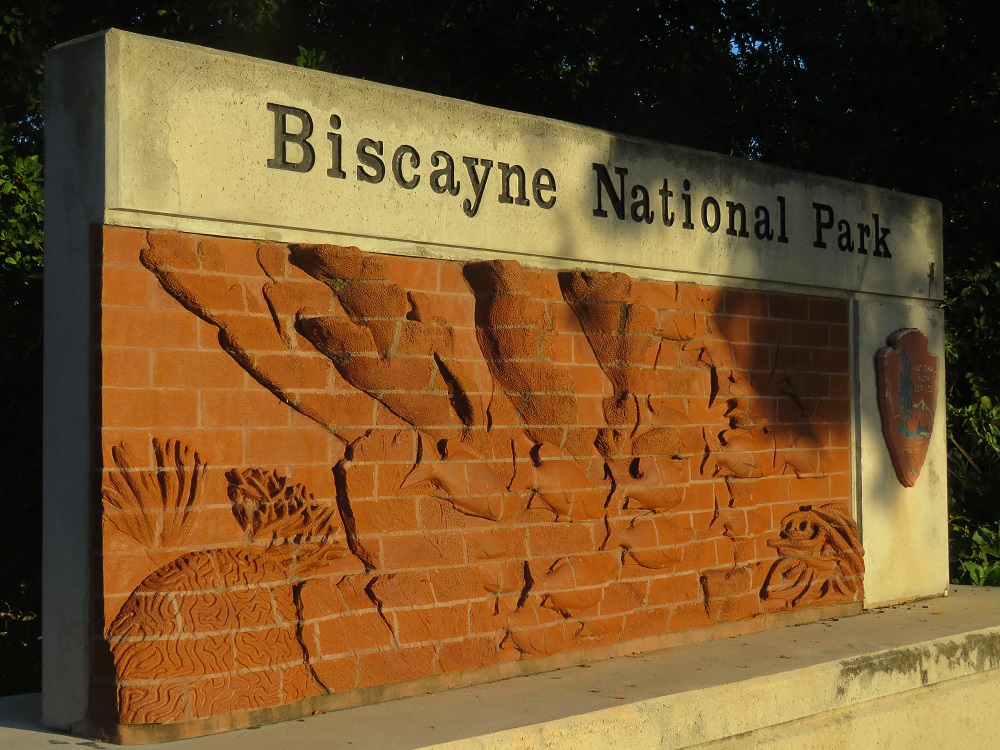
The next morning we headed down to Homestead for the 10:30 departure of our trip to Adams Key for snorkeling and paddleboarding. Since Biscayne National Park is 95% water, the best way to experience it is by boat. Biscayne National Institute runs boat cruises and eco-adventures which depart from the Dante Fascell Visitor Center. Advance reservations (available online) are recommended.
They offer a twice daily boat cruise to Boca Chita, 3.25 hour Snorkel Experience, a six hour Snorkel and Paddle Eco-adventure, and a sailboat trip (with snorkeling and paddleboarding). The boat cruise to Boca Chita is the most popular trip, but we decided to spend more time on the water with the Snorkel and Paddle Eco-adventure. We had a blast and have some great stories to tell as a result of our choice.
Key things to remember:
– Bring reef friendly sun screen, a lunch, snacks and water.
– There are no bathrooms on the boat for the eco-adventure. There are bathrooms on Adams Key during the lunch stop.
– They have snorkel gear to rent if you don’t have your own.
After the trip across the bay, we went snorkeling near Billys Point off Elliott Key. We worked our way down the shoreline near the mangroves and were able to see plenty of fish as well as the underwater portion of the complex mangrove root systems.
We had our GoPro Fusion with us so we captured some great 360 degree video while swimming in the water with the fish as well as exploring the mangroves. We also obtained a great story as the GoPro was dropped and sunk to the bottom of the bay just as we were getting off the boat and needed to be retrieved. Fortunately, the water was only 7-8 feet deep at the time and it had a bright yellow handle which made it easier to locate.
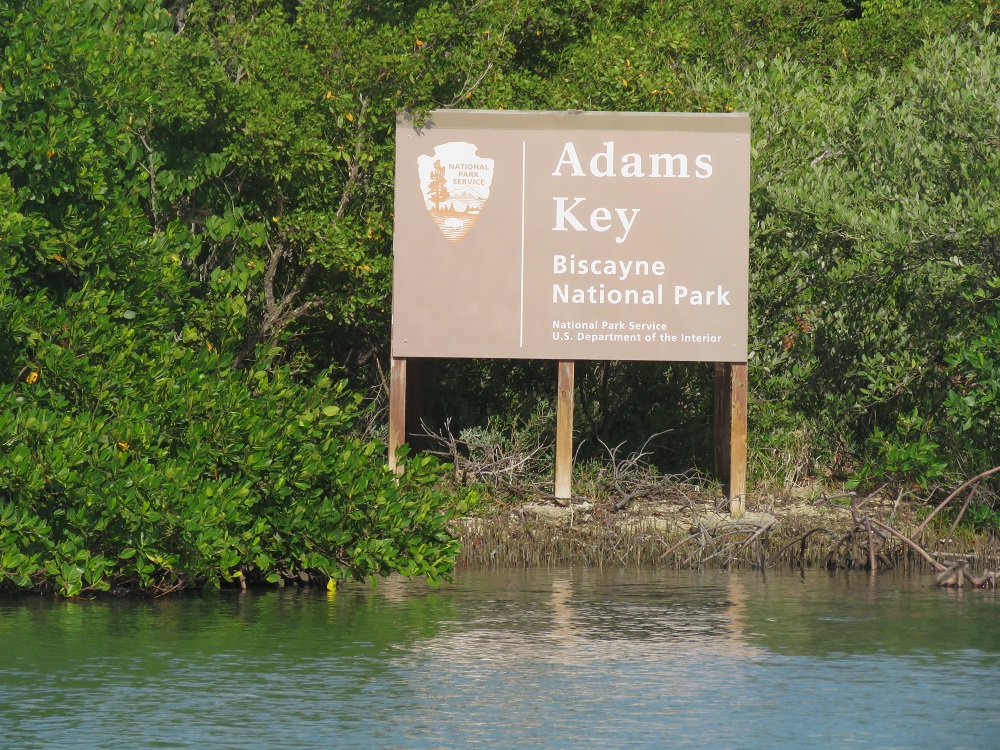
We stopped at the dock at Adams Key for lunch. Adams Key is a day use area with dock, picnic pavilion, restrooms, and a short trail for exploring the island. This is the picnic area where we ate lunch:
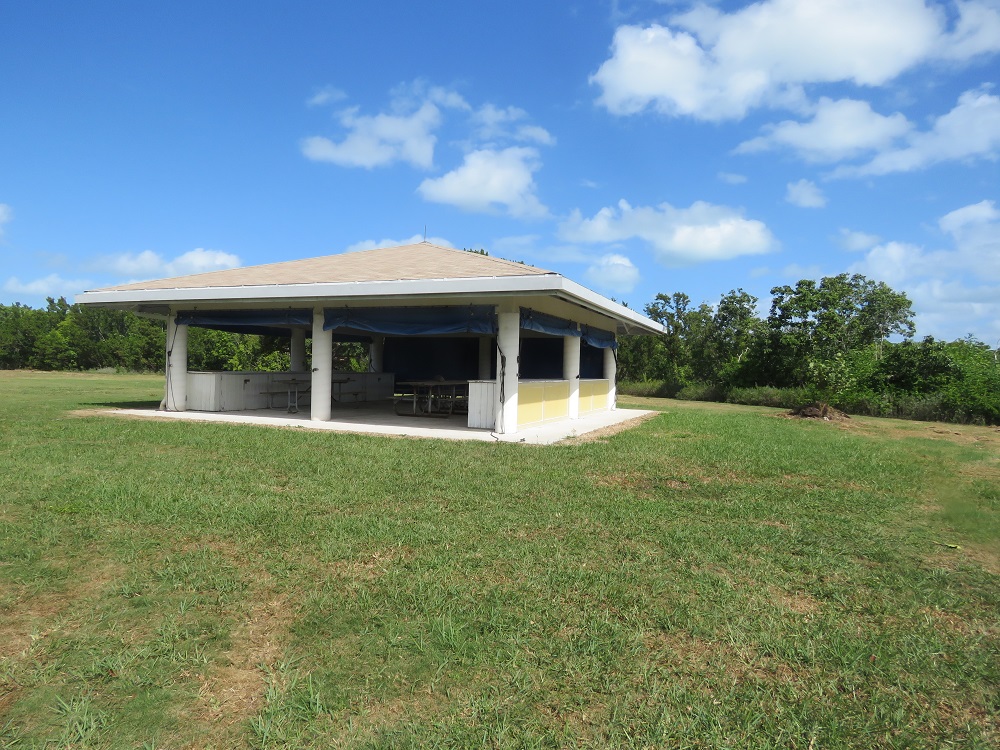
After lunch, we made our way down to Jones Lagoon for exploration on inflatable paddleboards. Our guide led us around and it turned out to be a beautiful and serene day on the water. When we got into a particularly quiet area, our boat captain / guide helped us to touch a jellyfish in the water.
Once we were back on the powerboat, it was time to settle in for our return trip across the bay. We did manage to see a group of pelicans diving into the bay for fish which is always pretty cool to watch.
When we got back to land, we spent a few minutes exploring the visitor center and then took a walk out on the boardwalk.
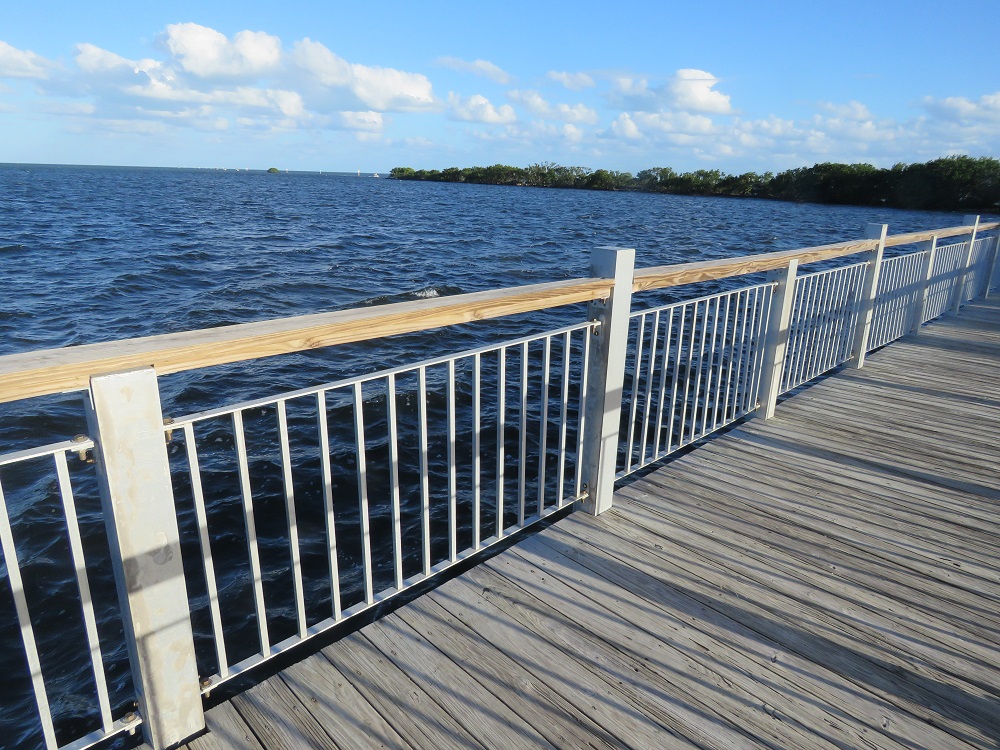
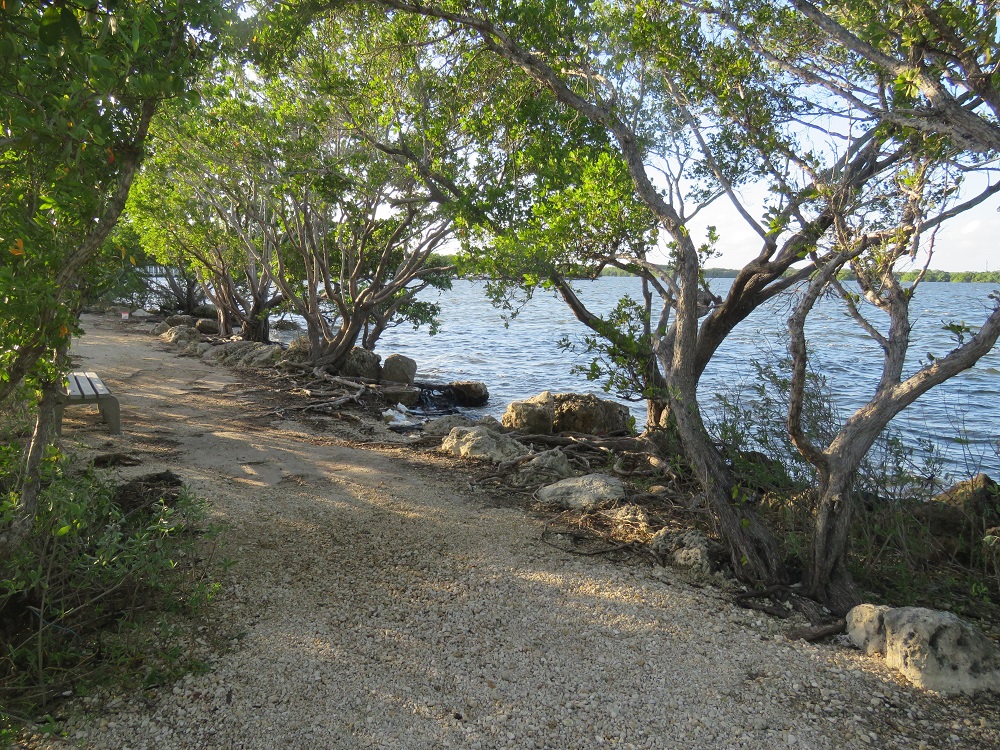
There was a decent crowd as it was the Sunday of Veteran’s Day weekend. We made it out to the end of the trail and then walked back to our car.
We were starving and headed into Homestead to find dinner and a place to stay for the night before resting up for the rest of our adventure in Everglades National Park.
These were a few of the birds that we saw and photographed during the day:
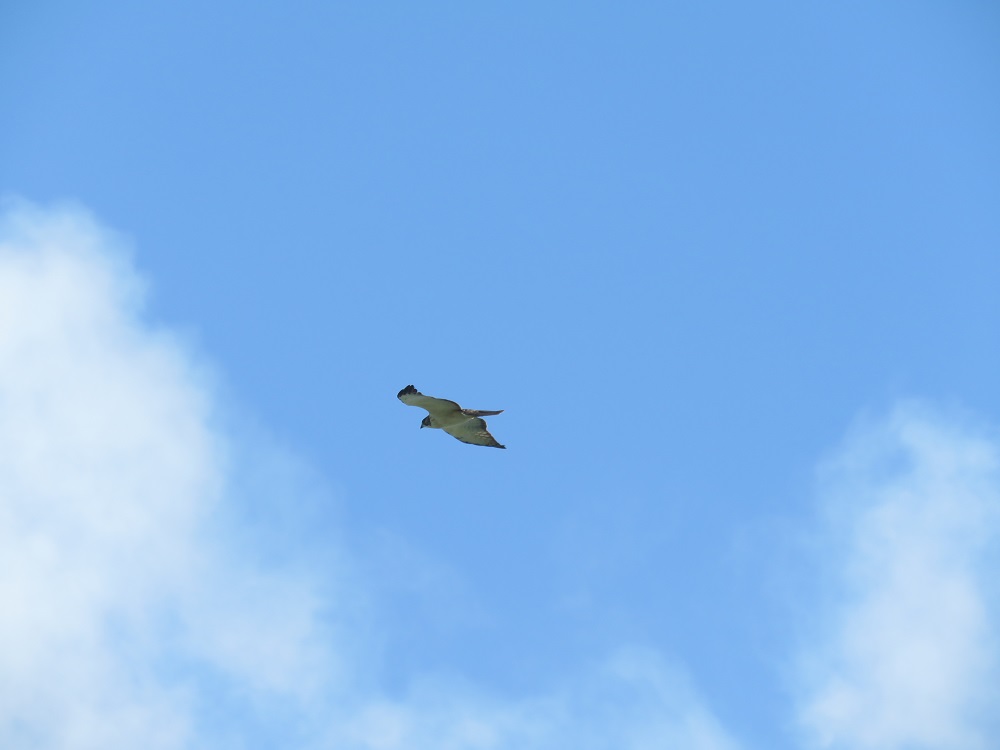
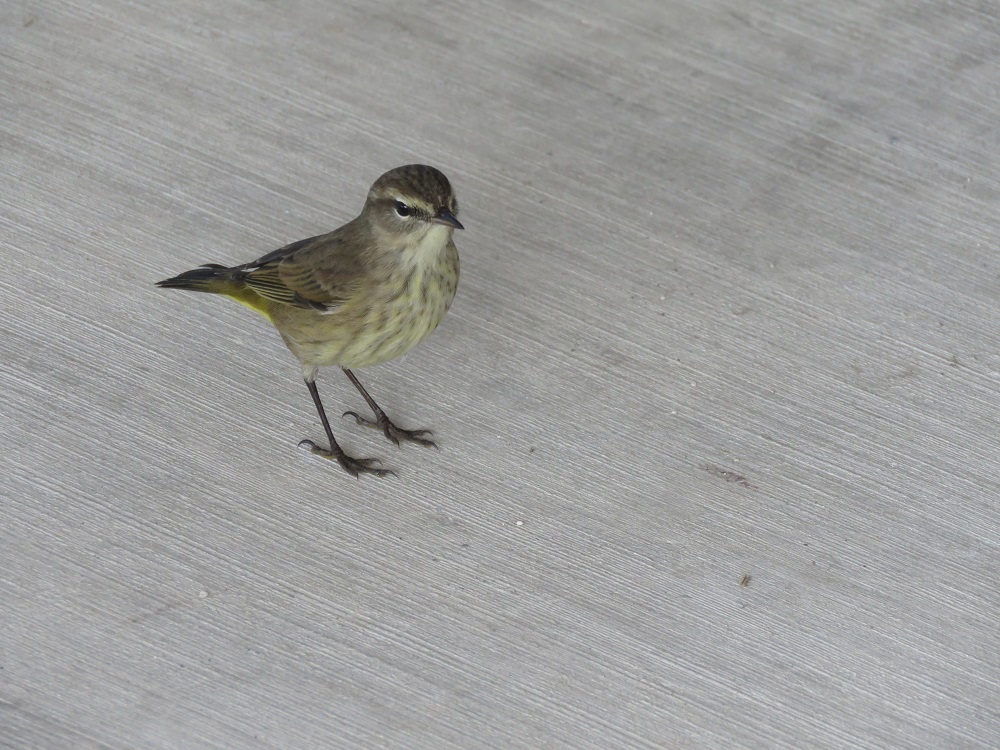

We got an early start the next day with a stop at Robert is Here for smoothies just after they opened. Since my name is Robert, it has become an obligatory stop to take a photo of the sign while we are in the area. Since it was early and not very crowded yet (particularly compared to the last time), we actually managed to meet Robert as he was working in the store.
After grabbing our smoothies, we entered the park. We saw this bird right at the visitor center near the entrance, and later in the day Jayne photographed the blue jay at the visitor center too.
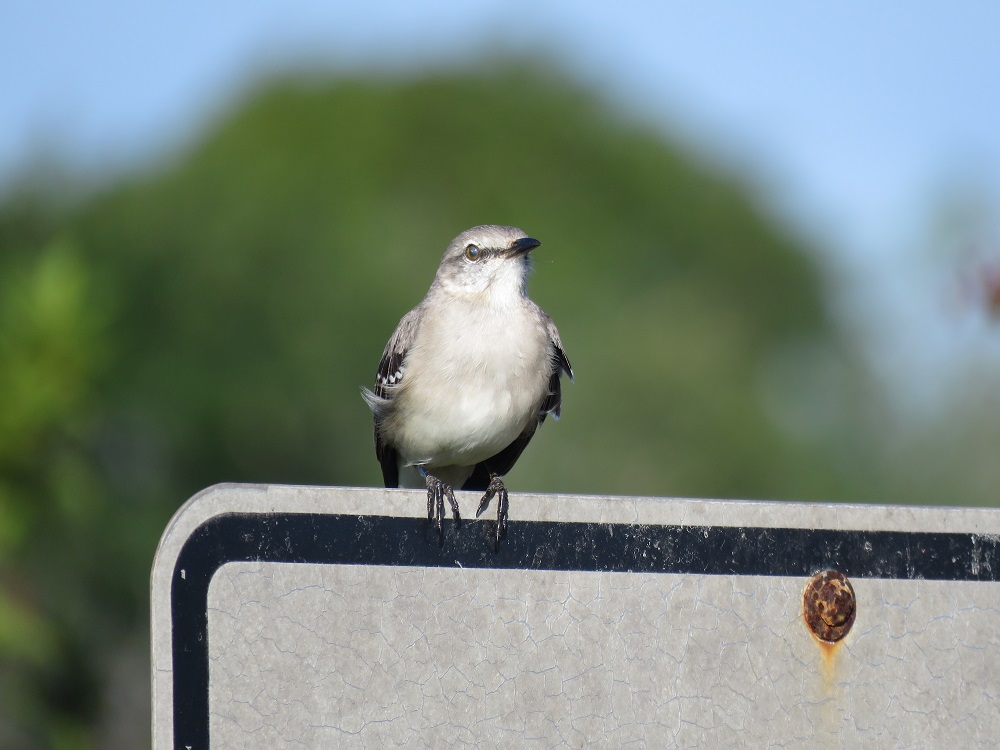
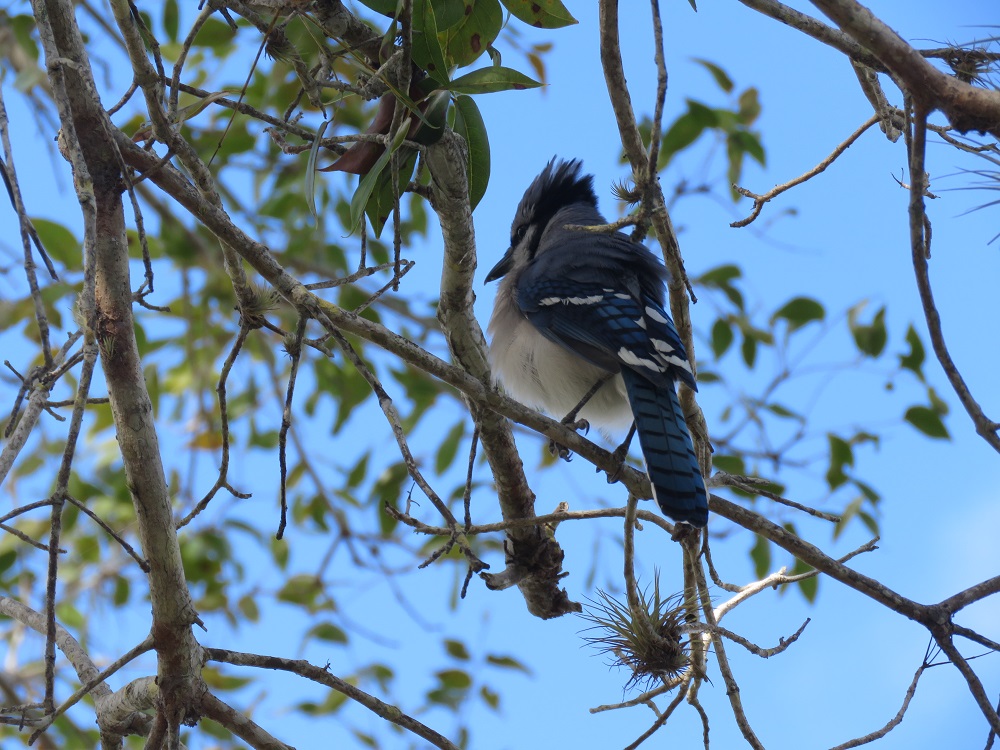
We proceeded to make our way down State Highway 9336 to Flamingo. It is roughly a 45 minute drive, but we wanted to make sure that we had enough time to get there as we missed out on it the last time. Our first stop once we were there was the restrooms outside the temporary visitor center. The Flamingo Visitor Center is closed for restoration following hurricane damage. They have a temporary visitor center setup across the parking lot in trailers.
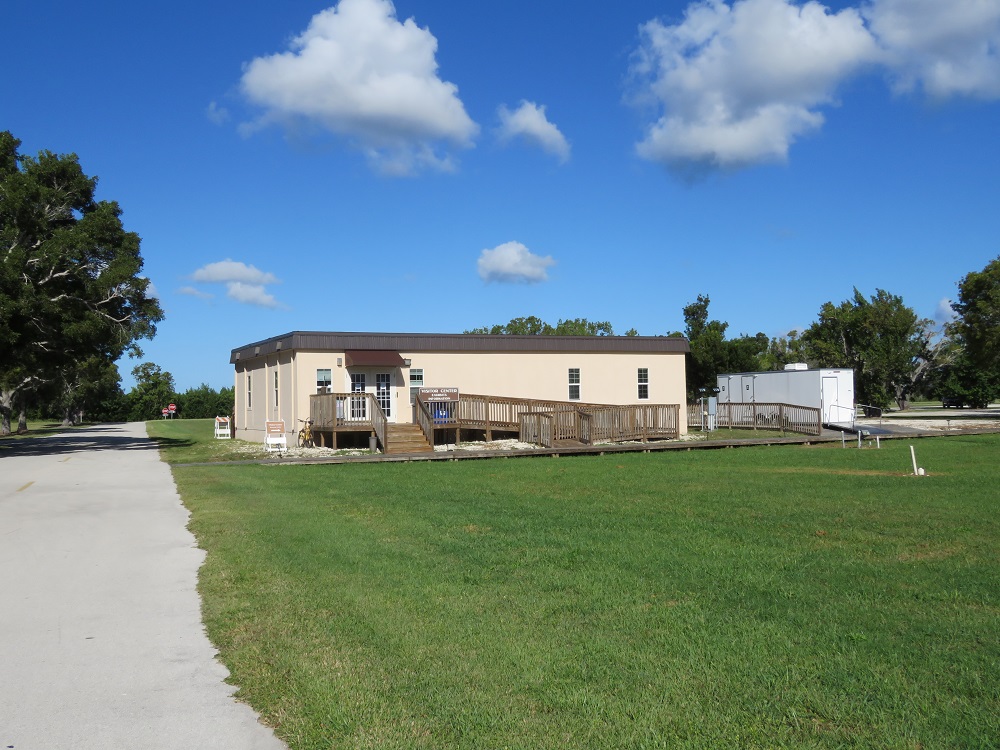
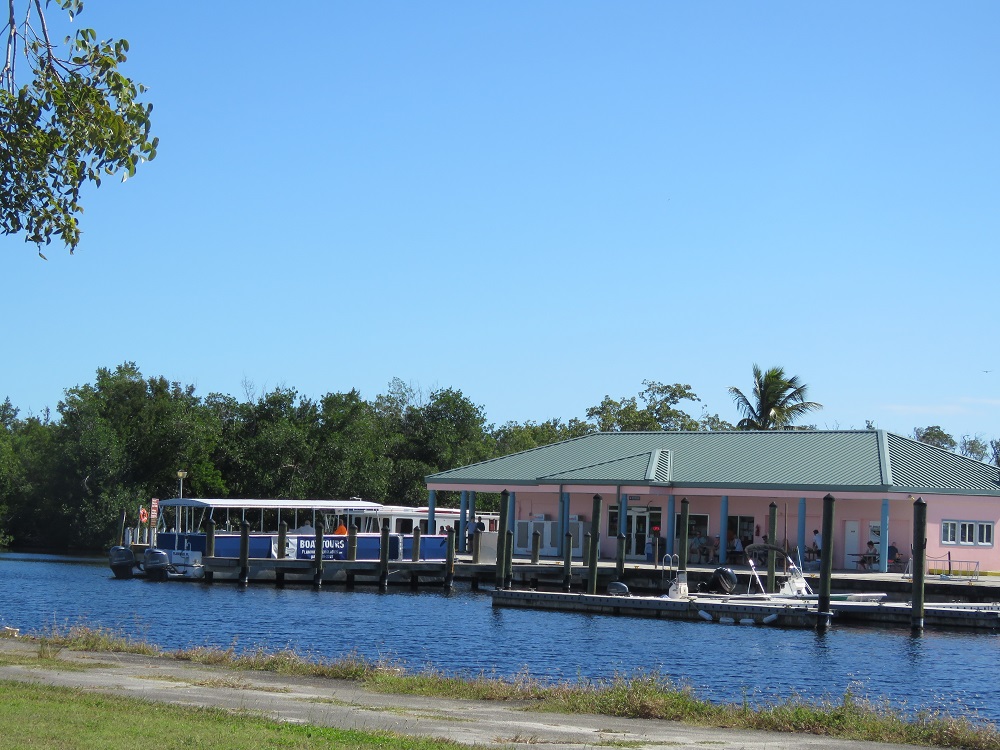
Our next stop after the visitor center was the marina. The marina offers boat tours and a small store. We were in exploring mode so we walked along the docks and watched the osprey and vultures fly back and forth. We also saw a group of manatees that were in the marina area.
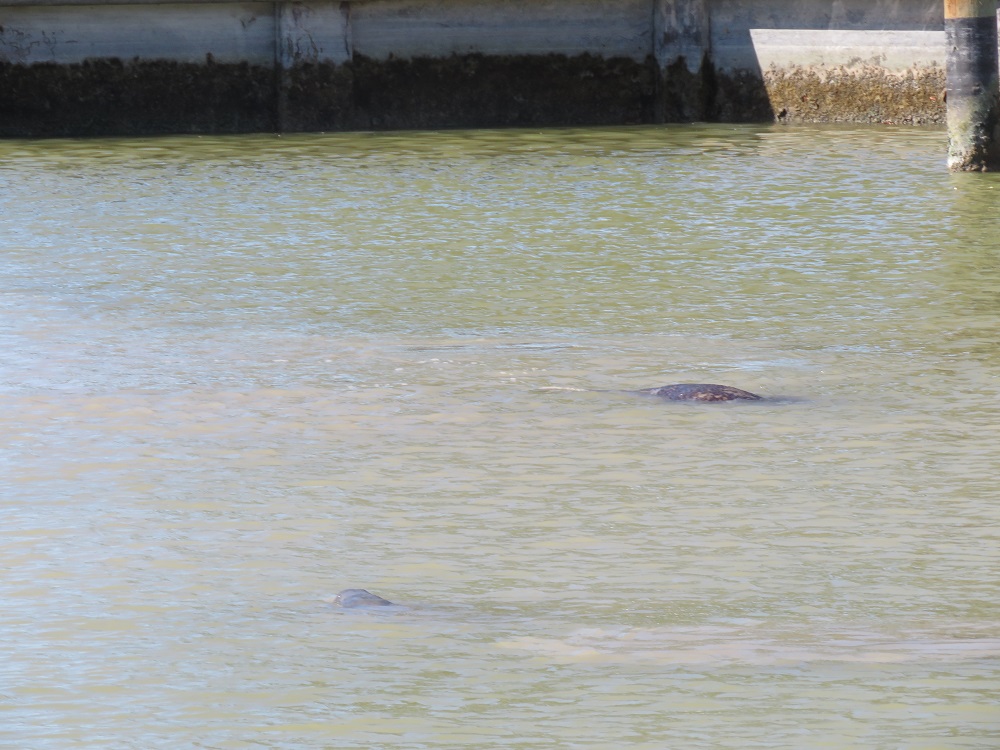
Pro tip: If you are going to visit Flamingo, be sure to bring something to cover your car (or at least your windshield wipers), as the vultures in the area are known to attack rubber on cars. We asked why this was and learned that they apparently put fish oil in such products and the birds are attracted to it. We didn’t know so we were not prepared for it but there were a number of grocery bags on windshield wipers in the parking lot. We heard a few stories about the vultures tearing into cars in the area.
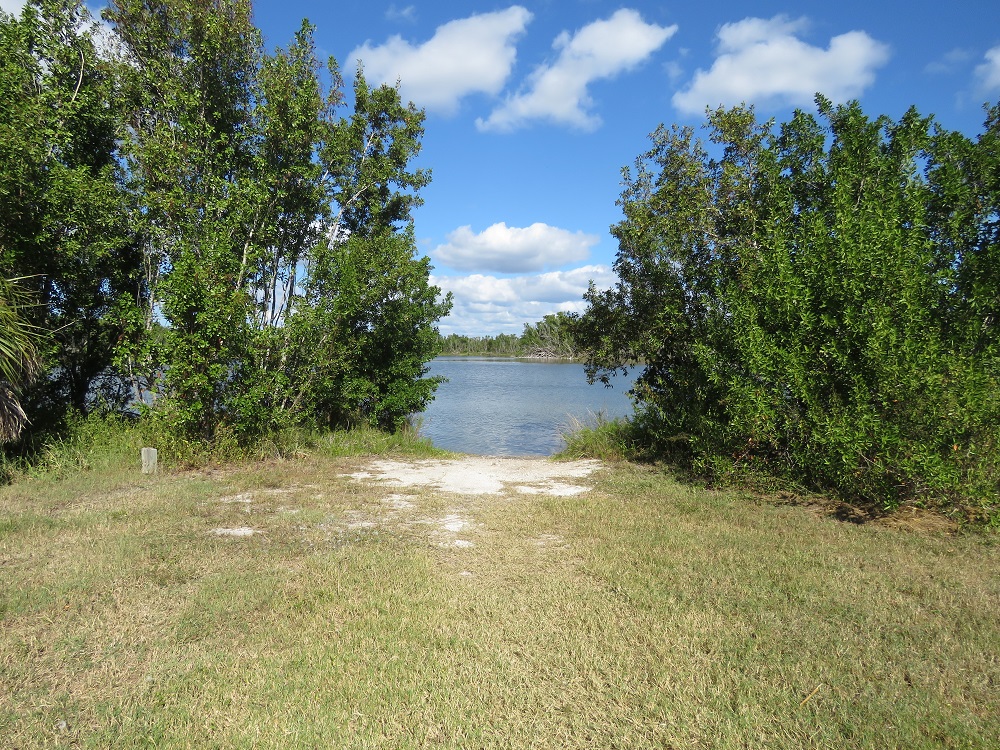
We had some time to explore the area while we were considering whether we had time to go on the Everglades boat tour so we headed down the road to the Eco-Pond (above) and the amphitheater area near the Guy Bradley trail. We saw a number of birds on the way including two osprey and an American Kestrel.
These birds were near the amphitheater:

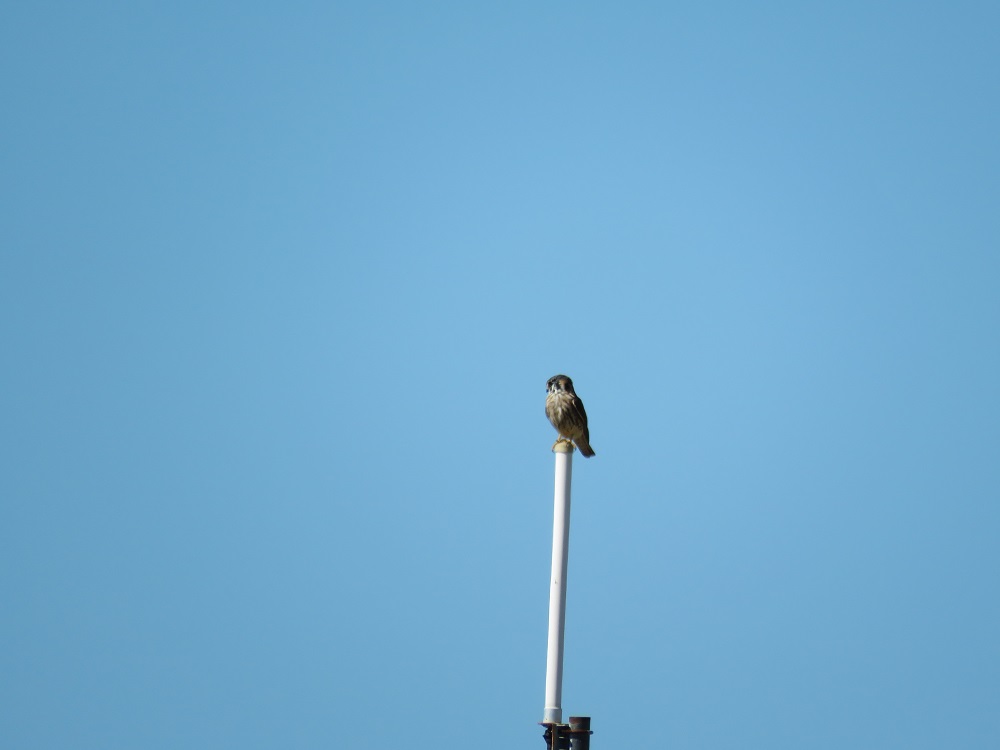
The amphitheater was overrun but we did get a nice photo of Florida Bay:

It was a beautiful day so we decided to take the backcountry boat tour. The cost is $40 for adults and includes a 90 minute trip up Buttonwood Canal through Coot Bay (second pic below) and Tarpon Creek into Whitewater Bay (third pic below), then back to Flamingo Marina.
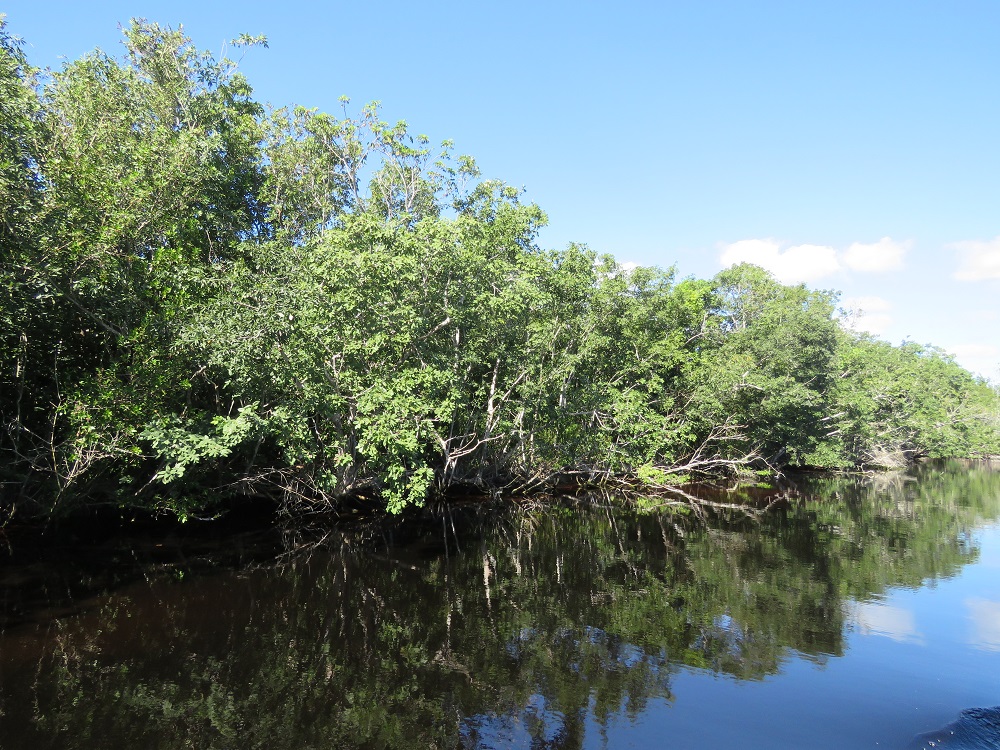
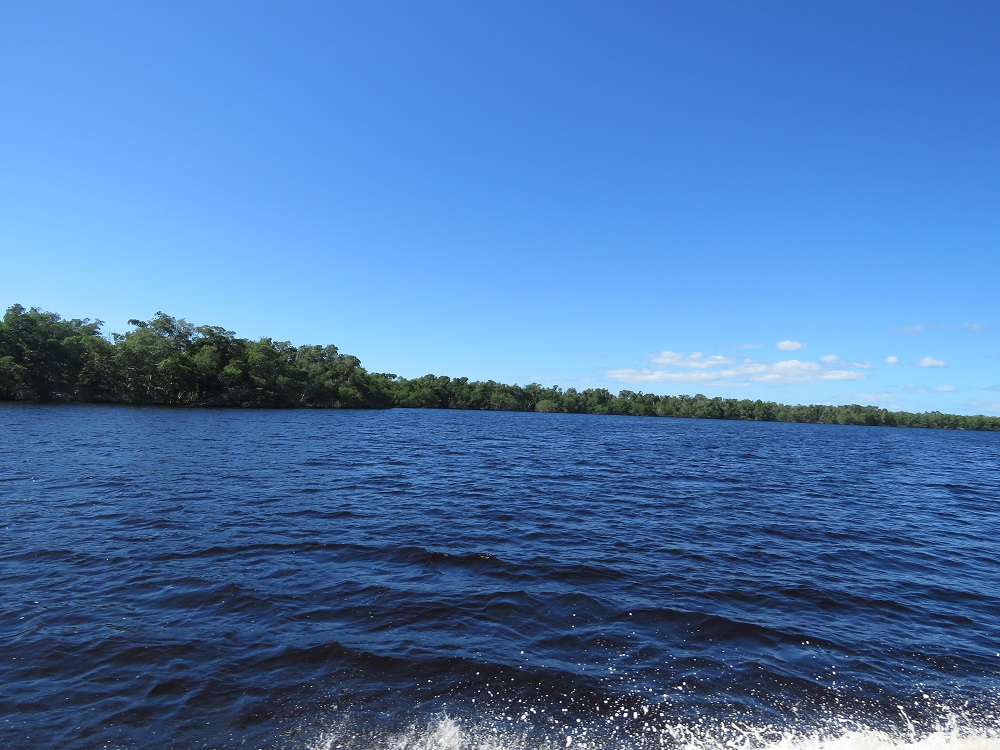
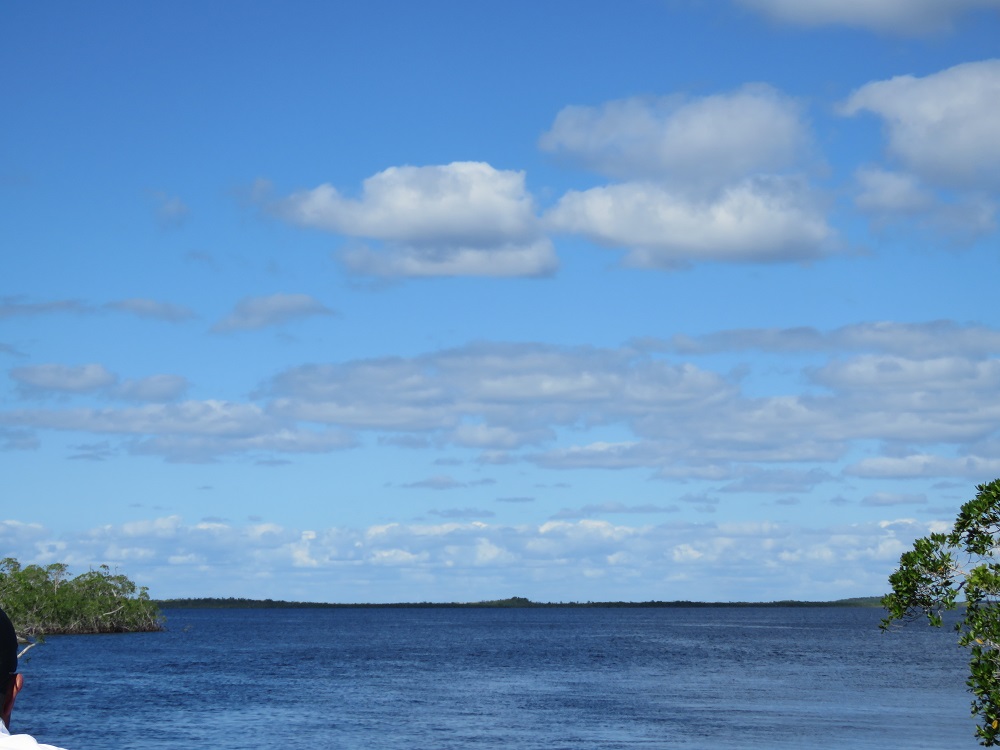
The boat trip presented us with some great birding. We saw a bald eagle, an osprey, great blue heron, anhinga, wood storks, egrets, a kingfisher and more.
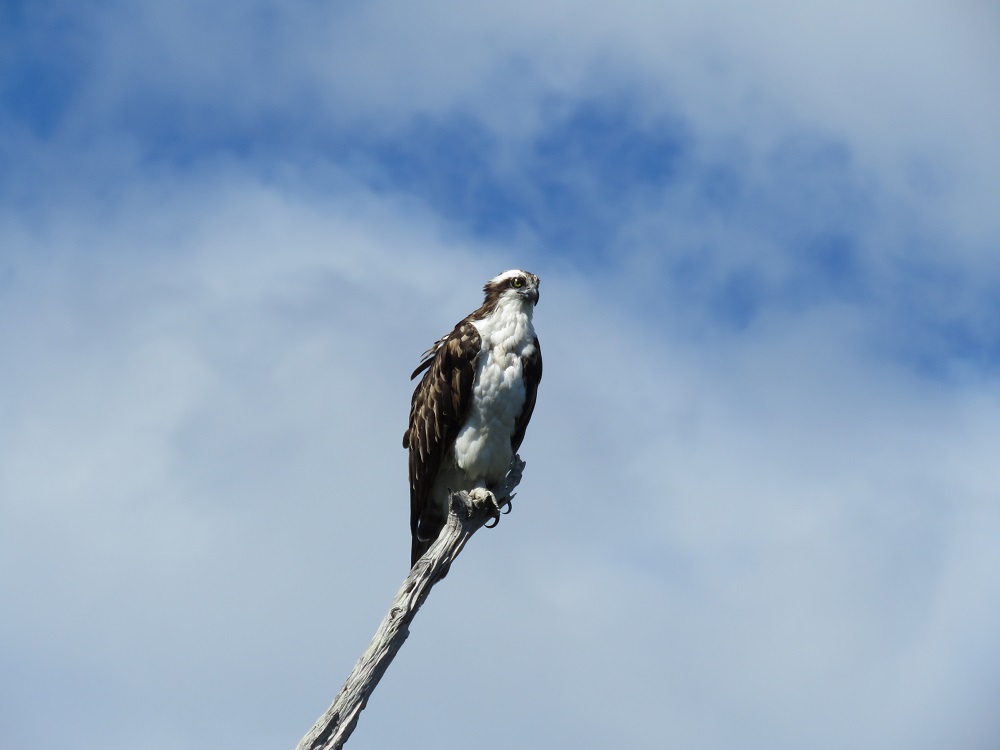
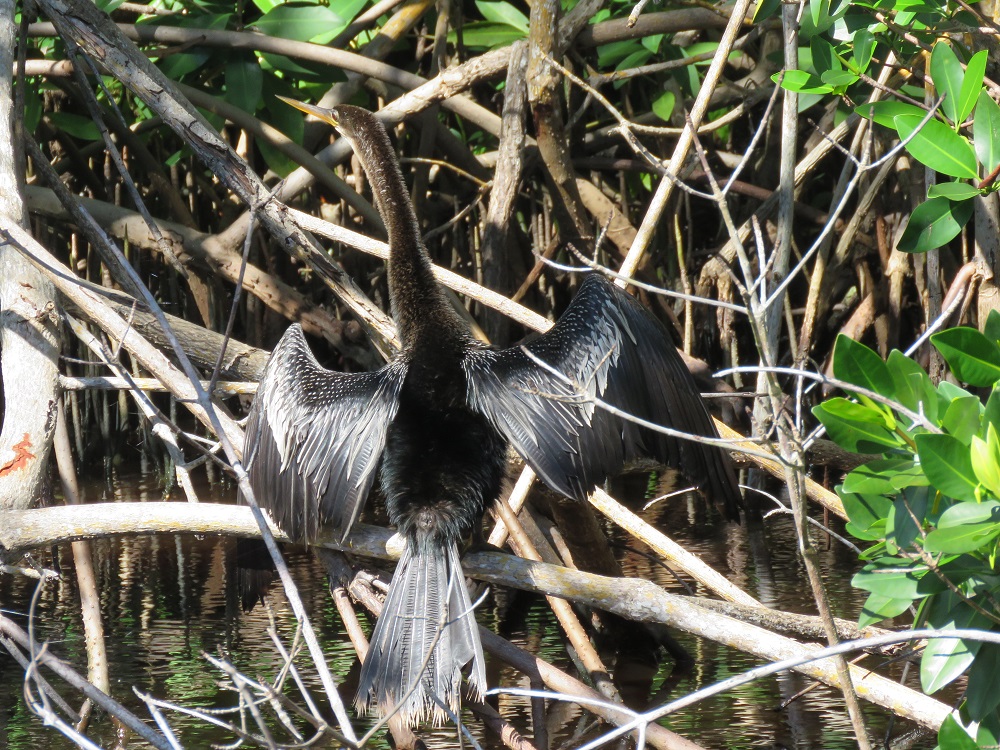
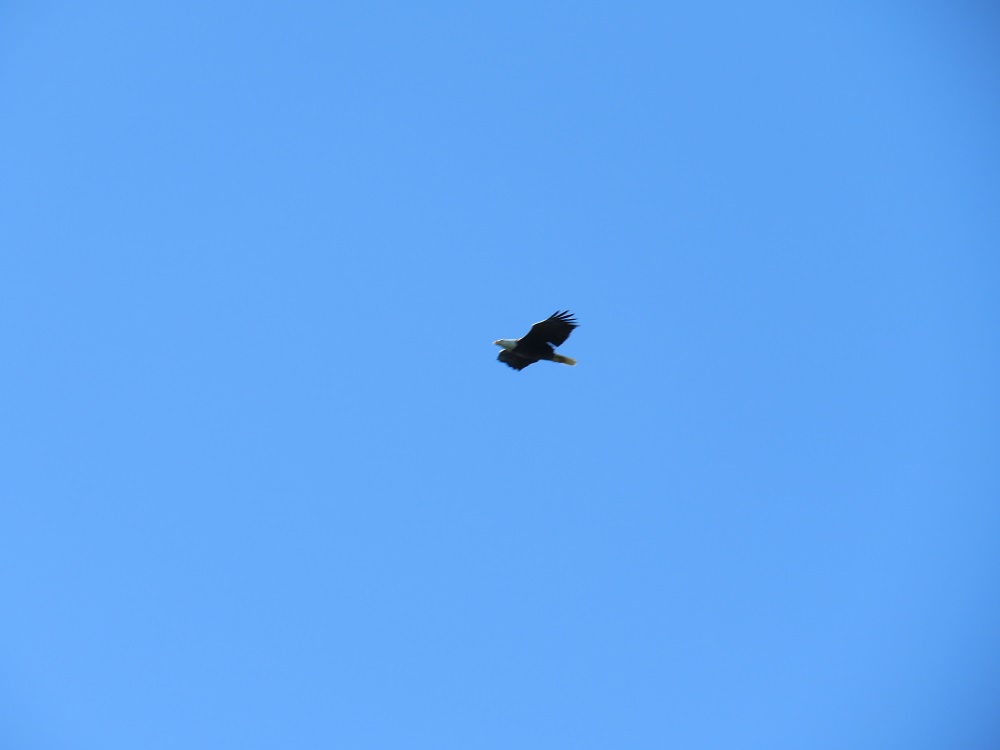
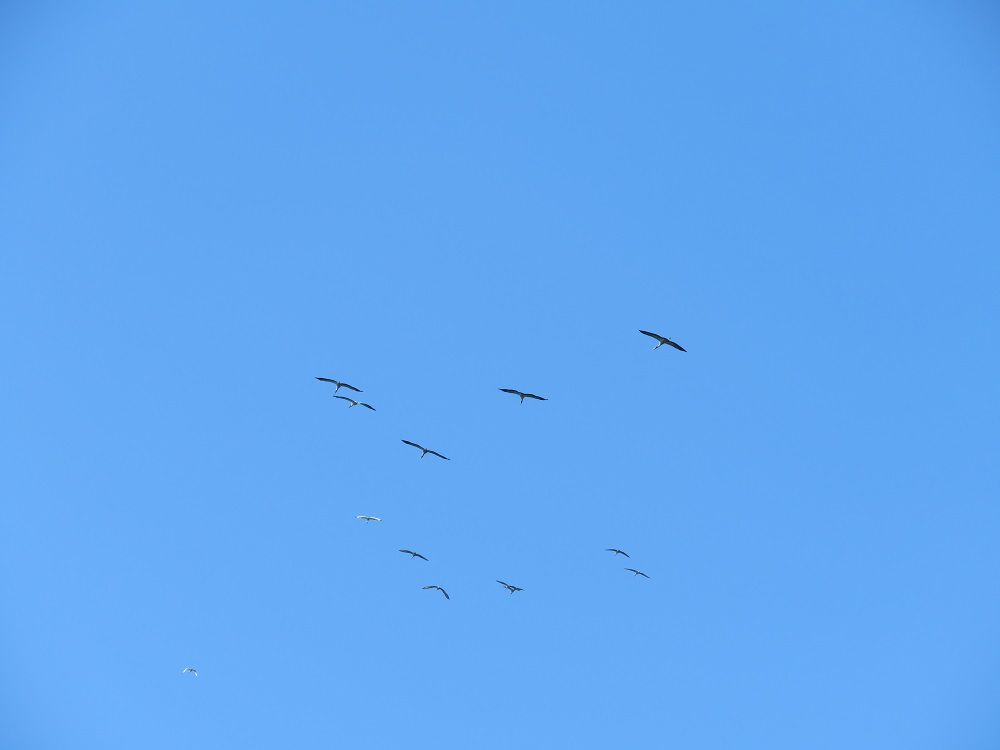
We also saw plenty of crocodiles including a few young crocodiles like the one below (zoomed in).
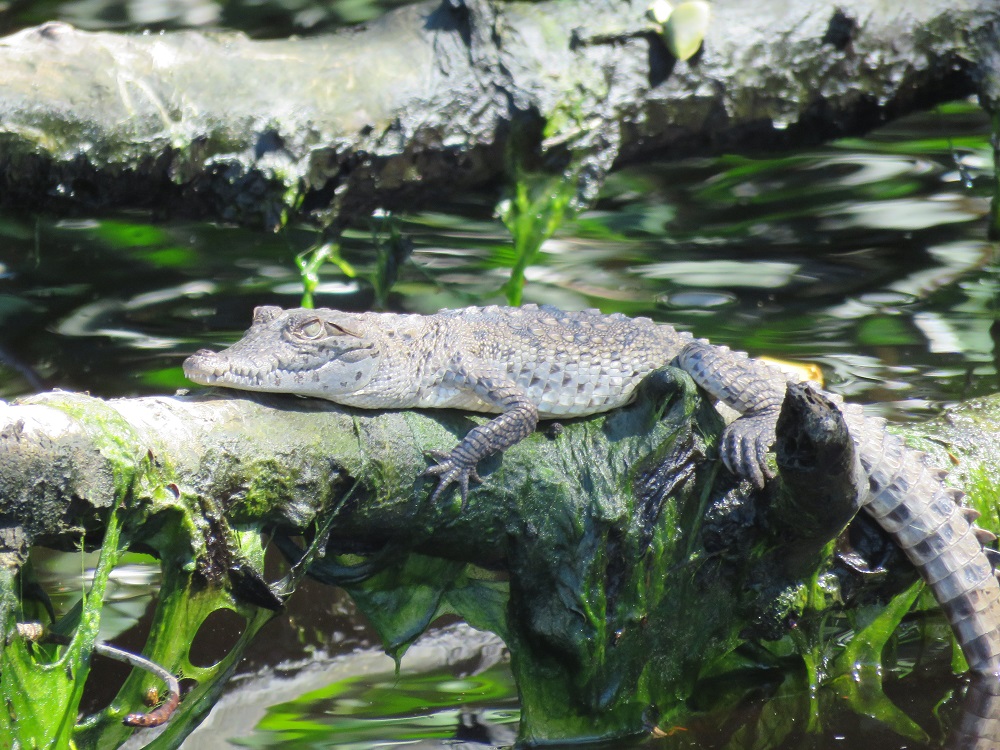
After the boat tour, we started the journey back to Homestead. Jayne jumped out on the other side of the marina to photograph a crocodile mom and her babies:
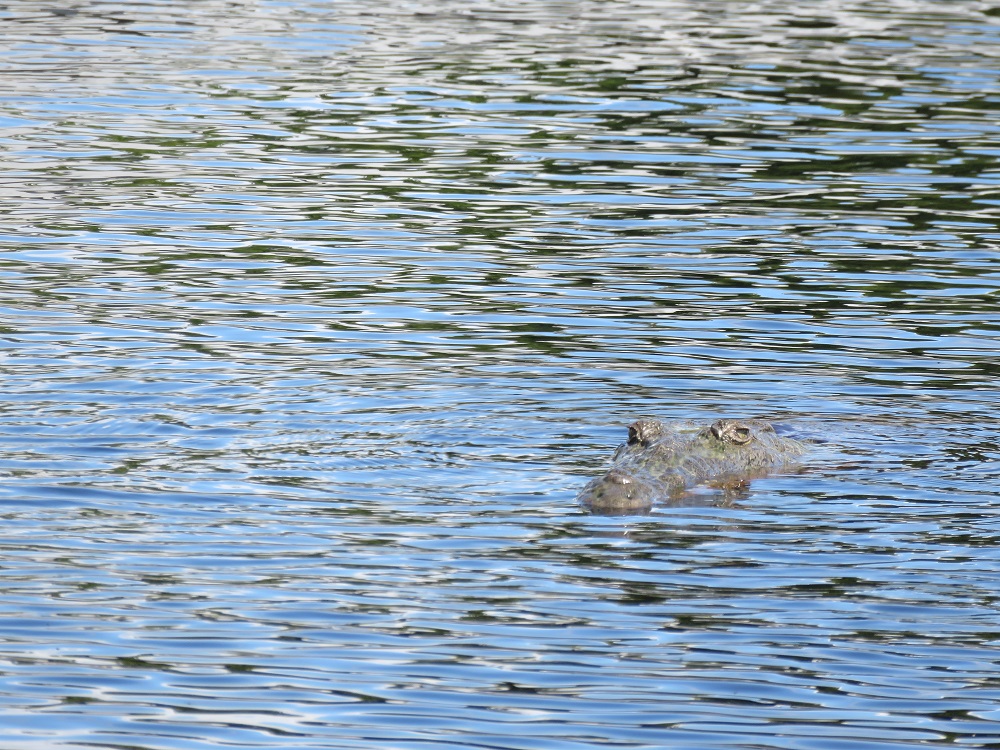
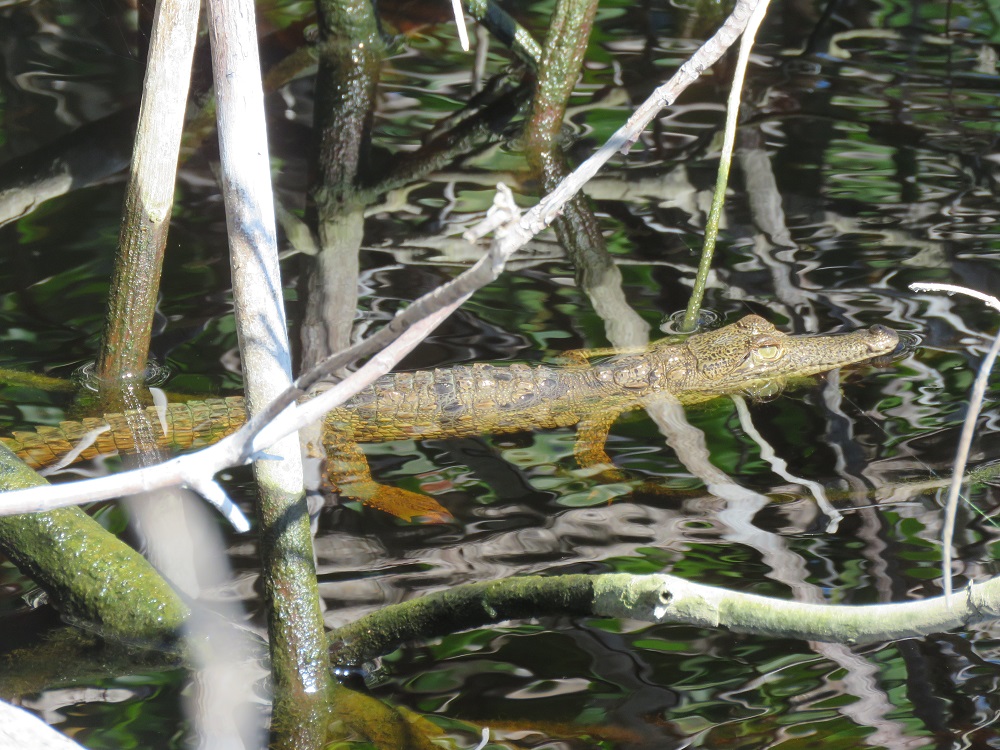
We made a quick stop at Nine Mile Pond to look around and take a few pictures. Nine Mile Pond offers canoeing and kayaking with rentals available at the Flamingo Marino. The boats are stored at Nine Mile Pond.
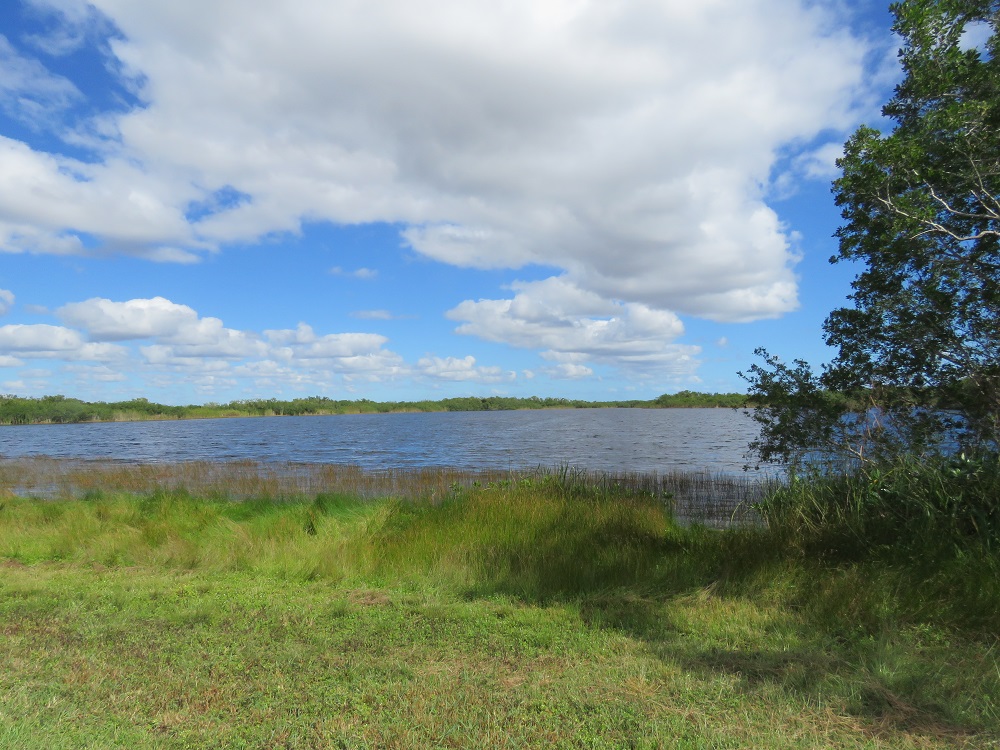
Next up was a short hike on the boardwalk at Mahogany Hammock Trail. The Mahogany Hammock is a slightly elevated area in the wetlands where Mahogany and hardwood trees grow. It is a short loop trail with the largest living Mahogany tree in the United States.
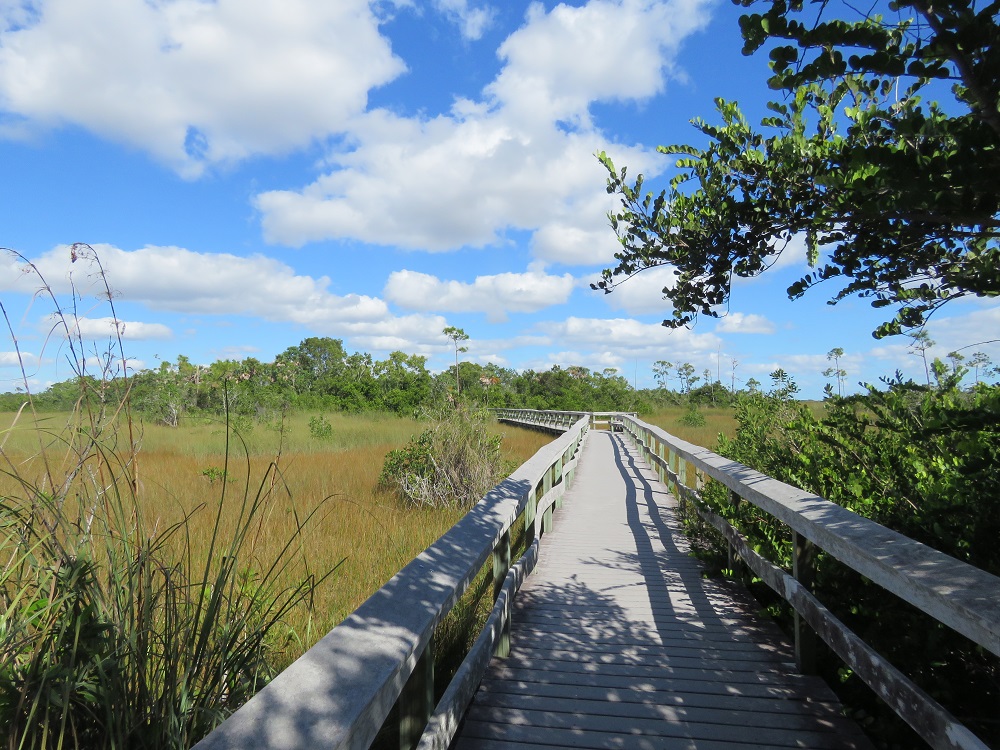
We headed back to the visitor center and then the hotel – it was tempting to repeat some of our previous adventure but we had other plans for the afternoon and were travelling to see family the next day.
